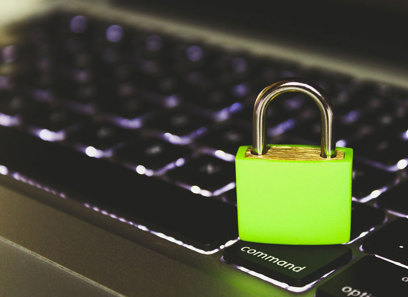Cybersecurity Advisory 2025 Checklist for Long-Term Safety
Why Every Organization Needs a Solid Cybersecurity Advisory 2025 Method
In 2025, organizations deal with a rapidly developing cyber threat landscape. The class of strikes, driven by innovations in technology, necessitates a solid cybersecurity advising approach. This technique not only boosts danger evaluation but also grows a culture of safety and security understanding among workers. As critical infrastructure comes to be increasingly prone, the need for positive actions becomes clear. What steps should companies require to ensure their defenses are durable adequate to stand up to these difficulties?
The Evolving Cyber Threat Landscape
As cyber risks continue to advance, companies must stay attentive in adjusting their security steps. The landscape of cyber hazards is noted by enhancing elegance, with enemies utilizing innovative strategies such as fabricated knowledge and machine understanding to make use of vulnerabilities. Ransomware assaults have surged, targeting critical facilities and requiring hefty ransom money, while phishing systems have actually ended up being a lot more misleading, usually bypassing traditional protection procedures.
In addition, the rise of the Net of Points (IoT) has actually increased the attack surface, providing brand-new entry points for cybercriminals. Organizations face tests not just from outside hazards yet likewise from expert dangers, as employees may inadvertently jeopardize delicate data. To successfully deal with these evolving dangers, services need to prioritize proactive strategies, including routine updates to their protection framework and continual employee training. By remaining educated concerning the newest trends in cyber threats, companies can much better secure their assets and maintain strength in an increasingly hostile digital atmosphere.
The Value of Risk Analysis
Recognizing the relevance of threat assessment is important for companies aiming to fortify their cybersecurity posture. An extensive risk evaluation identifies vulnerabilities and possible dangers, making it possible for companies to prioritize their resources efficiently. By assessing the likelihood and impact of various cyber dangers, companies can make enlightened choices concerning their protection measures.
In addition, risk evaluations aid organizations comprehend their conformity responsibilities and the legal ramifications of data breaches. They give understandings right into the company's present safety and security methods and highlight locations needing improvement. This positive approach promotes a society of safety awareness amongst workers, encouraging them to identify and report possible risks.
Carrying out routine danger analyses makes certain that companies remain nimble in addressing emerging dangers in the dynamic cyber landscape. Ultimately, a robust risk evaluation process contributes in establishing a customized cybersecurity approach that lines up with organizational goals while safeguarding important assets.
Positive Measures for Cyber Protection
Carrying out aggressive procedures for cyber defense is vital for organizations looking for to minimize possible threats prior to they rise. A detailed cybersecurity technique should consist of regular susceptability analyses and penetration screening to determine weak points in systems. By conducting these evaluations, organizations can attend to susceptabilities before they are manipulated by malicious actors.
Furthermore, constant tracking of networks and systems is critical. This includes utilizing sophisticated hazard discovery innovations that can determine unusual task in real-time, permitting for quick actions to possible breaches. Moreover, worker training on cybersecurity finest techniques is important, as human error usually presents significant dangers. Organizations must foster a culture of security recognition, making sure that staff members recognize their duty in protecting sensitive details.
Ultimately, developing a case feedback plan makes it possible for companies to react effectively to breaches, minimizing damages and recovery time. By carrying out these aggressive procedures, companies can substantially boost their cyber defense stance and protect their electronic properties.
Enhancing Remote Job Security
While the change to remote work has provided flexibility and convenience, it has also introduced significant cybersecurity challenges that companies have to address. To improve remote job safety and security, business require to carry out durable safety procedures that safeguard delicate information. This consists of the usage of online personal networks (VPNs) to encrypt web links, ensuring that workers can access firm sources safely.
Furthermore, organizations ought to mandate multi-factor authentication (MFA) to include an additional layer of protection for remote gain access to - ERC Updates. Regular training sessions for workers on determining phishing attempts and keeping safe and secure techniques are also essential
Companies need to perform routine safety and security analyses to recognize susceptabilities in their remote work infrastructure. By adopting these strategies, companies can effectively mitigate threats connected with remote job, securing both their data and their track record. Stressing a culture of cybersecurity recognition will certainly additionally empower employees to contribute to a safe remote working environment.
Leveraging Cloud Technologies Securely
An expanding number of companies are migrating to cloud modern technologies to improve operational effectiveness and scalability, yet this change likewise demands rigorous protection measures. Appropriately leveraging cloud solutions requires an extensive understanding of prospective vulnerabilities and risks connected with shared settings. Organizations should execute solid access controls, ensuring that just licensed personnel can access delicate information. Encryption of information both in transportation and at remainder is essential to securing information from unauthorized accessibility.
Routine audits and monitoring can aid determine anomalies and prospective threats, permitting organizations to react proactively. In addition, adopting a multi-cloud approach can minimize reliance on a solitary company, possibly reducing the influence of violations. Staff member training on cloud protection best methods is vital to cultivate a security-aware society. By incorporating these steps right into their cloud technique, companies can harness the advantages of cloud technologies while mitigating protection threats efficiently.
Keeping Client Count On and Track Record
Just how can organizations ensure that client count on and online reputation continue to be intact in an increasingly digital landscape? To attain this, companies need to focus on openness and positive interaction. By clearly describing their cybersecurity procedures and without delay addressing any possible breaches, they can foster go to my site a culture of trust. On a regular basis updating consumers about security procedures and possible risks shows a commitment to protecting their information.
Additionally, organizations need to spend in thorough cybersecurity training for employees, making certain that everybody understands their role in securing customer details. Carrying out robust security measures, such as multi-factor verification and file encryption, further strengthens the company's commitment to maintaining client trust.
Moreover, event and acting on customer feedback concerning security techniques can reinforce connections. By being responsive and flexible to customer problems, companies not only safeguard their track record however also enhance their trustworthiness out there. Thus, a steadfast focus on cybersecurity is crucial for maintaining client depend on.
Ensuring Regulatory Compliance and Legal Security

A strong cybersecurity advisory strategy assists organizations identify suitable laws, such as GDPR, HIPAA, and CCPA, and carry out needed actions to comply with them. This method not just ensures compliance but also enhances lawful security against prospective violations and misuse of data.
Organizations can profit from regular audits and evaluations to assess their cybersecurity posture and determine vulnerabilities. By cultivating a culture of conformity and continual improvement, organizations can reduce risks and show their commitment to securing delicate information. Ultimately, spending in a durable cybersecurity method improves both regulative conformity and legal security, guarding the company's future.
Often Asked Questions

How Can Organizations Identify Their Particular Cybersecurity Requirements?
Organizations can determine their certain cybersecurity needs by performing risk assessments, examining existing safety and security measures, analyzing prospective threats, and engaging with stakeholders to comprehend susceptabilities, ultimately creating a customized technique to attend to unique difficulties.
What Budget plan Should Be Assigned for Cybersecurity Advisory Services?

Just How Commonly Should Cybersecurity Strategies Be Upgraded?
Cybersecurity techniques need to be upgraded a minimum of annually, along with after significant incidents or modifications in innovation (Cybersecurity Advisory 2025). Routine evaluations make sure efficiency against progressing hazards and conformity with governing needs, maintaining organizational resilience against cyber risks
What Qualifications Should a Cybersecurity Consultant Possess?
A cybersecurity expert need to possess pertinent accreditations, such as copyright or CISM, comprehensive experience in risk monitoring, knowledge of conformity guidelines, strong analytical skills, and the ability to connect complicated principles effectively to varied target markets.
How Can Organizations Measure the Effectiveness of Their Cybersecurity Technique?
Organizations can measure the effectiveness of their cybersecurity method via normal audits, keeping track of case reaction times, assessing danger knowledge, carrying out staff member training evaluations, and reviewing compliance with market criteria and policies to ensure continuous enhancement.